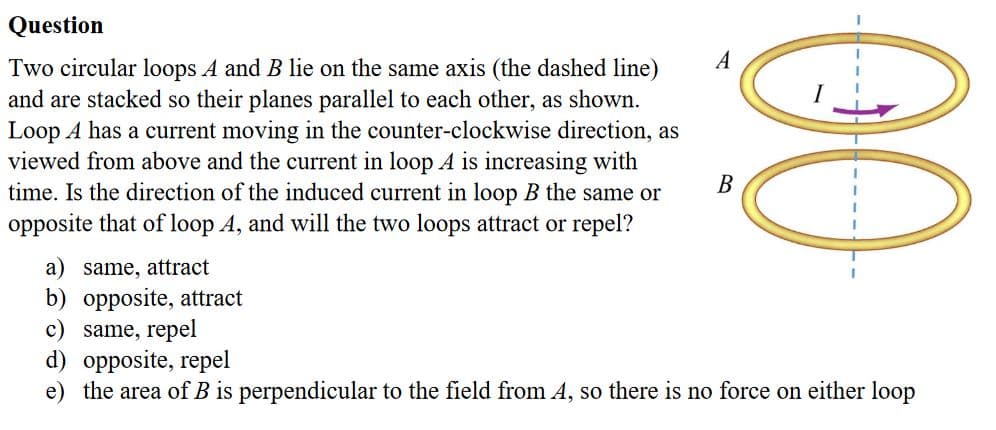A Two circular loops A and B lie on the same axis (the dashed line) and are stacked so their planes parallel to each other, as shown. Loop A has a current moving in the counter-clockwise direction, as viewed from above and the current in loop A is increasing with time. Is the direction of the induced current in loop B the same or opposite that of loop A, and will the two loops attract or repel? В a) same, attract b) opposite, attract c) same, repel d) opposite, repel e) the area of B is perpendicular to the field from A, so there is no force on either loop
A Two circular loops A and B lie on the same axis (the dashed line) and are stacked so their planes parallel to each other, as shown. Loop A has a current moving in the counter-clockwise direction, as viewed from above and the current in loop A is increasing with time. Is the direction of the induced current in loop B the same or opposite that of loop A, and will the two loops attract or repel? В a) same, attract b) opposite, attract c) same, repel d) opposite, repel e) the area of B is perpendicular to the field from A, so there is no force on either loop
Related questions
Question
Show Work Please (Q2)

Transcribed Image Text:A
Two circular loops A and B lie on the same axis (the dashed line)
and are stacked so their planes parallel to each other, as shown.
Loop A has a current moving in the counter-clockwise direction, as
viewed from above and the current in loop A is increasing with
time. Is the direction of the induced current in loop B the same or
opposite that of loop A, and will the two loops attract or repel?
В
a) same, attract
b) opposite, attract
c) same, repel
d) opposite, repel
e) the area of B is perpendicular to the field from A, so there is no force on either loop
Expert Solution
This question has been solved!
Explore an expertly crafted, step-by-step solution for a thorough understanding of key concepts.
This is a popular solution!
Trending now
This is a popular solution!
Step by step
Solved in 2 steps with 2 images
